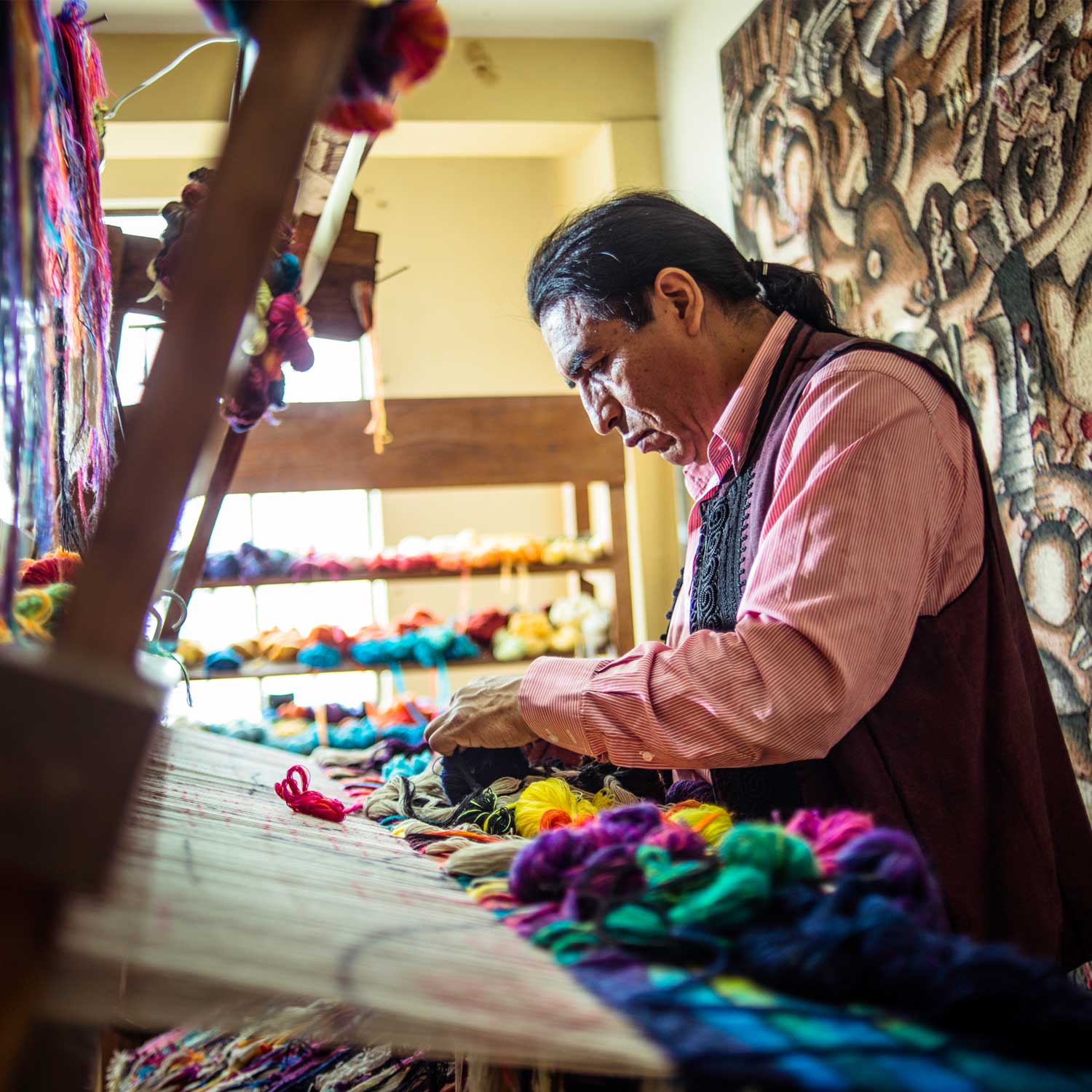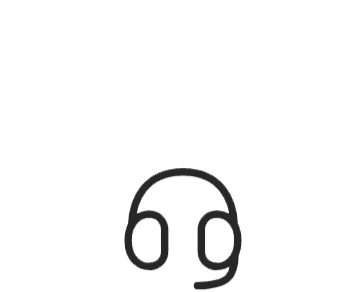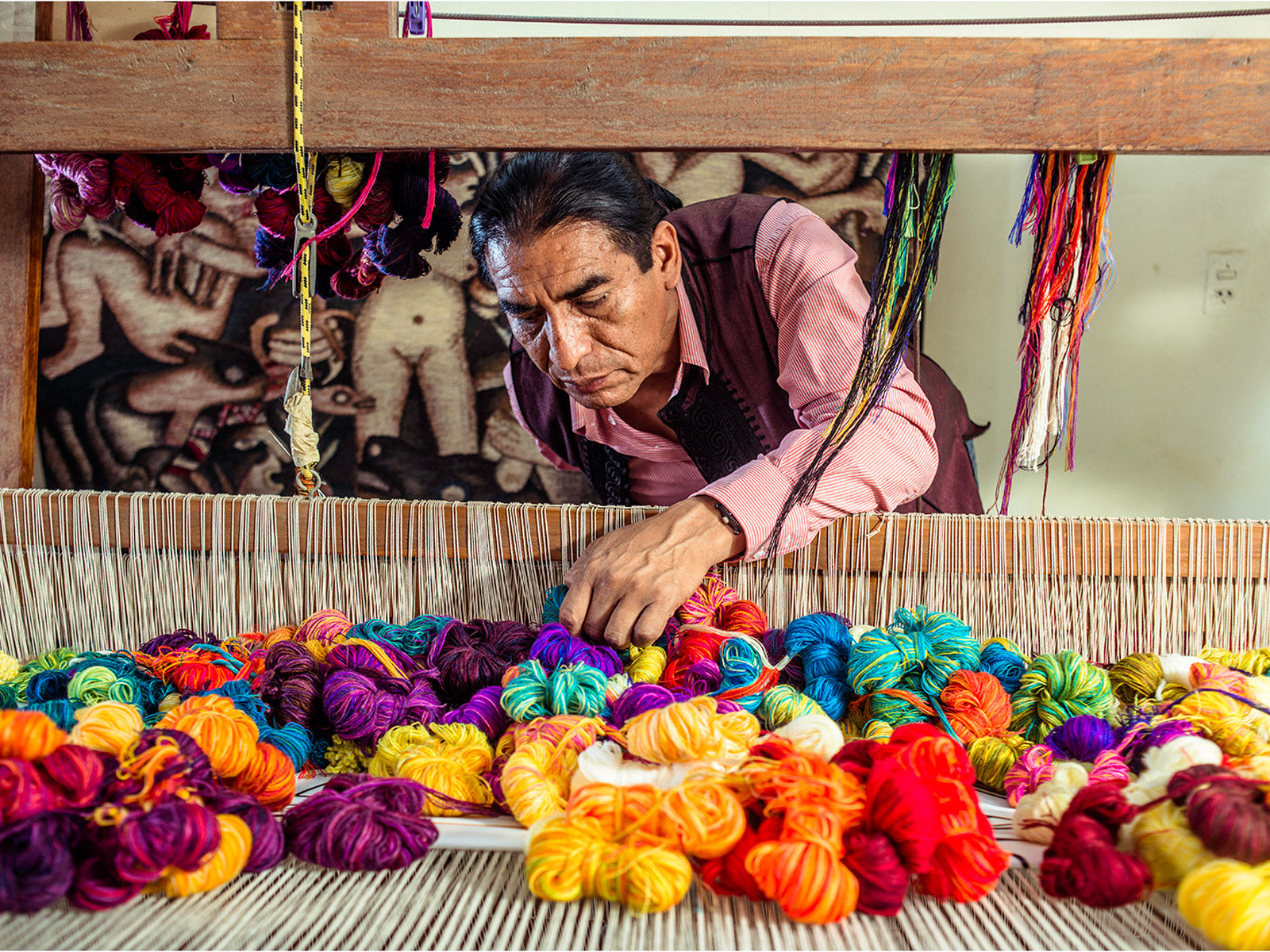
My work is nourished by symbols, stories, traditions, rituals, experiences, and by permanently returning to admire the iconography of ancestral world cultures, especially Peruvian cultures. These experiences inspire me to discover, explore and absorb contemporary visual arts, which exist lavishly, choosing the one that moves me and fits the direction of my visions of totem images, of symbolic characters and landscapes, and of my experience; developing ancestral patterns that are essentially Andean – Maximo Laura
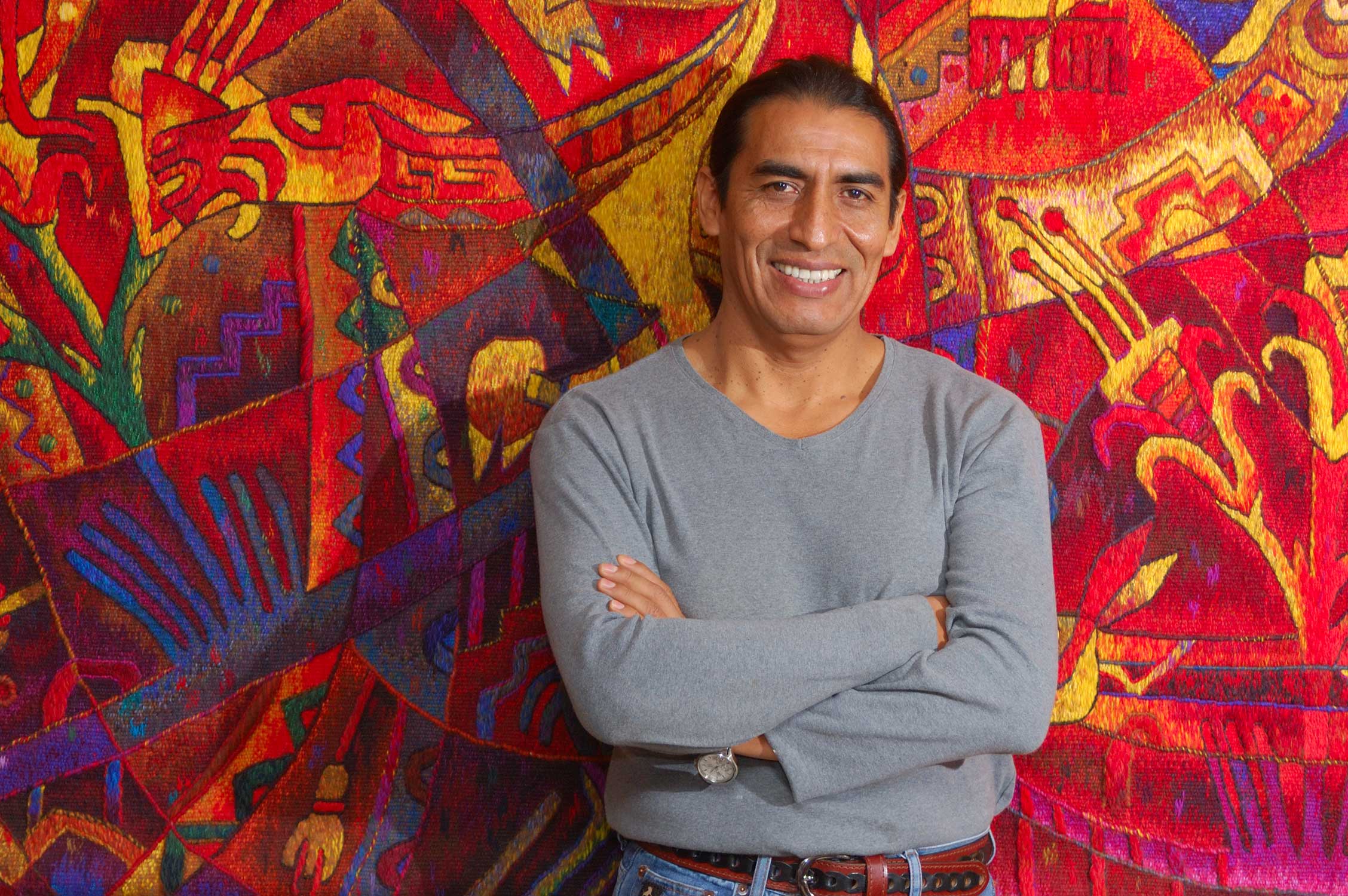
Laura is the fifth generation of weavers that learned his craft as a child at the side of his father while growing up in Ayacucho; he learned his art by never silencing the internal self-exploration or the external exploration of the world, including a life long study of art history and literature beyond the borders of Peru.
My work is nourished by symbols, stories, traditions, rituals, experiences, and by permanently returning to admire the iconography of ancestral world cultures, especially Peruvian cultures. These experiences inspire me to discover, explore and absorb contemporary visual arts, which exist lavishly, choosing the one that moves me and fits the direction of my visions of totem images, of symbolic characters and landscapes, and of my experience; developing ancestral patterns that are essentially Andean – Maximo Laura
Laura is the fifth generation of weavers that learned his craft as a child at the side of his father while growing up in Ayacucho; he learned his art by never silencing the internal self-exploration or the external exploration of the world, including a life long study of art history and literature beyond the borders of Peru.


While he now lives and works in Lima, his work is deeply imbued with the legends and storytelling of his Peruvian heritage and with his own very compelling life experiences. Laura draws from many sources of inspiration, such as Chavin culture which is expressive and totemic; Paracas which is colorful and strong; Nazca and Huari for their geometric forms; and Chancay for its sobriety and linear spirit.
Maximo Laura´s vision proposes the promotion of Peruvian contemporary textile art on international stage, which has been the underlying and fundamental purpose of his artistic mission for the last 30 years.
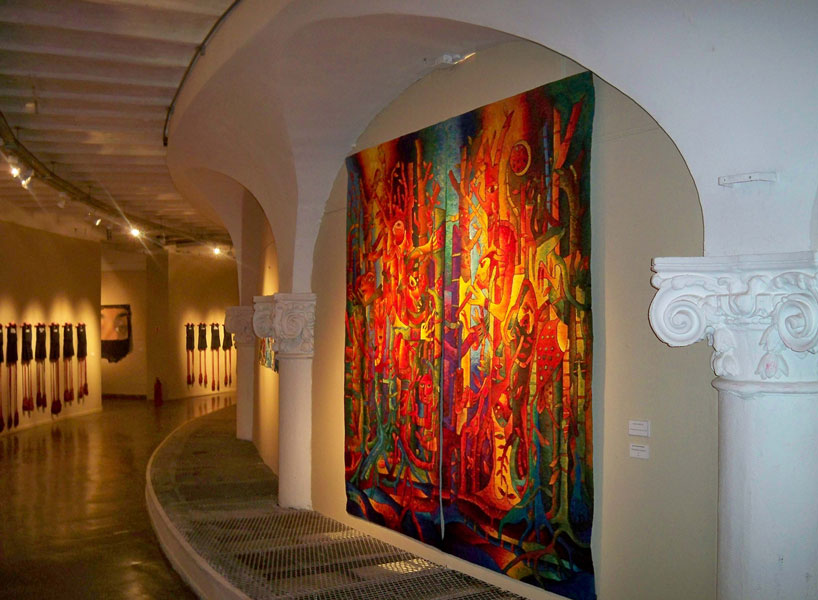
Owners of Laura´s work include the World Bank in Washington D.C., the UNESCO Headquaters in Paris, the Smithsonian´s National Museumof the American Indian, the Museum of Iberoamerican Craft in Spain, the Museum of the Americas in Miami, the The Latvian National Museumof Art and the National Museum of Peruvian Culture.
Since his first exhibition at the Cultural Center of Buenos Aires, Argentina in 1985, work of Maximo Laura has been in over 140 exhibitions in more than 29 countries (China, USA, France, Italy, Poland, Belgium, Australia, Cuba, Argentina, among others), with solo exhibitions at the Musée de Bibracte (France), the Smithsonian´s National Museum of the American Indian (USA), the Textile Museum (USA), the Museum of the Americas (Costa Rica), the Museum of Decorative Arts and Design (Latvia), the Craft Museum of Finland, among others.
Maximo Laura is co-founder of Iberoamerican Textile Network and the Peruvian Center of Textile Art. He is also member of the American Tapestry Alliance, the European Tapestry Network and the British Tapestry Group.
